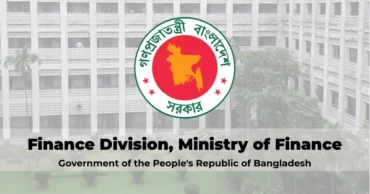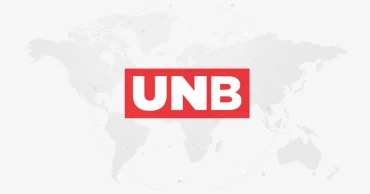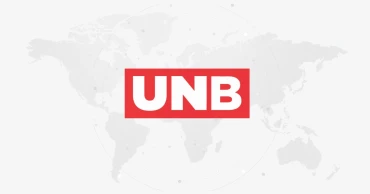public expenditure
Amid lower govt spending relative to GDP, Bangladesh plans increased investment to stimulate pvt sector
Bangladesh's Finance Ministry is tackling what it identifies as one of its most formidable challenges: significantly amplifying public expenditure to catalyse sustained growth within the private sector.
An official document from the ministry underscores that, in comparison to other economies, Bangladesh's government spending as a percentage of GDP markedly trails, thereby emphasising the urgency to augment investment.
Data from the World Economic Forum and the IMF (as of April 2023), reveal Bangladesh's public expenditure at 13.1% of its GDP, a figure that stands in stark contrast to countries like France at 58.5%, Sweden at 46.8%, and even neighbouring India at 28.8%. This discrepancy highlights the room for growth in Bangladesh's fiscal strategy.
The government, aiming to elevate GDP growth and living standards, views the expansion of its expenditure as crucial. This ambition is supported by the progressive implementation of reforms in Public Financial Management. Historically, the government has gradually increased its spending relative to GDP, signaling a positive trajectory.
Interest rate for April set at 13.55%, for consumer loans add 1%
Outlined in the 'Medium Term Macroeconomic Policy Statement (2023-24 to 2025-26)' from the Finance Division, the government's medium-term strategy is geared towards securing inclusive and high growth. This strategy is aligned with Bangladesh's Vision 2041, the 8th Five Year Plan, and the Sustainable Development Goals (SDGs), focusing on priority sectors including infrastructure, industrial production, food security, job creation, healthcare, and education among others.
In anticipation of the demands of the Fourth Industrial Revolution (4IR), significant allocations have been dedicated to human resource development, particularly in education and skills training. The fiscal projections set public expenditure targets at 15.2% for the 2023-24 fiscal year, 15.4% for 2024-25, and 16.2% for 2025-26.
The document further highlights Bangladesh's progression to a lower-middle-income country, with aspirations to attain upper-middle-income status by 2031. This ambition aligns with the developmental targets set within the 8th Five Year Plan and reflects the government's commitment to resuming the rapid economic growth witnessed pre-COVID-19 and pre-Russia-Ukraine war.
Banks to remain open on April 5, 6, and 7 for payment of garment workers’ salary, bonus
In response to the COVID-19 pandemic, the government prioritised life and livelihood protection, adopting an expansionary fiscal policy and channeling additional funds into critical sectors.
Despite the global political and economic instability, these measures have begun to show promise, with expectations of returning to pre-pandemic growth levels and policies aimed at promoting pro-poor and inclusive growth.
As Bangladesh looks forward, the Finance Ministry is set on formulating strategies to enhance pro-poor growth, stimulate both domestic and international private investment, bolster public investment, curb inflation, generate employment, and alleviate the balance of payment pressures. These objectives underscore a holistic approach to not only recovering from recent global challenges but also setting a solid foundation for long-term, sustainable development.
1 year ago
Tk6 trillion budget in the works for 2021-22; govt eyes increased outlay on capital expenditure
The government allocation for public expenditure on goods and services will witness a significant rise in the coming years after a slight dip in the last couple of years.
The government has estimated to spend Tk 401.3 billion, which is 6.6% of the budget, for public expenditure in the coming 2021-22 fiscal.
The country is likely to get Tk 5933.14 billion budget for 2021-22 fiscal, Tk 253.14 billion higher than the running one, aiming to face the COVID-19 pandemic challenge for recovering the economy.
Read BSMMU announces Tk 602.73cr budget for FY 2020-21
The estimation for 2022-23 fiscal has been set at Tk 465.2 billion, which will be 6.7% of the budget.
According to an official document, the allocation for the purpose in the running 2020-21 fiscal is Tk 350 billion or 6.1% of the budget.
The document also reads that the government has estimated to bring down its expenditure in current account, including purchase of product and service, while increase the capital expenditure in the next two fiscals.
It said that the current expenditure for 2021-22 and 2022-23 fiscal has been estimated at 54.4% and 54.5% of the total budget respectively.
Also read: Spending on public servants' remuneration to witness uptick from next fiscal
As per the document, the government allocation for expenditure can be divided in current expenditure and capital expenditure.
Salaries and allowances of government employees, purchase of product and service, compensation and relocation expenses, payment of interest against foreign and domestic loans - these are all found under the current expenditure category. Besides, ‘food accounts’ and ‘expense for structural coordination’ are also under this expenditure.
On the other hand, capital expenditure is spending that leads to the creation of new productive assets and inclusion. It is akin to investment, so government-funded projects and project components in the annual development programme (ADP), as well as non-ADP capital expenditure are the two main categories for capital expenditure.
Also read: Stop unnecessary expenditure of public money: PM
Besides, loans and advance payments, development programmes from revenue budget, projects outside the ADP and non-ADP Food for Work programme and handover expenses fall under this expenditure.
The document stated that in the revised budget for the 2019-20 fiscal, the allocation for public expenditure on products and services was Tk 322.1 billion, that is 6.5% of the budget.
It also mentioned that in 2018-19 fiscal the allocation was Tk 285.7 billion which was 7.3% of the budget that year.
In four previous fiscals i.e. 2017-18, 2016-17, 2015-16 and 2014-15 respectively, the allocations were Tk 234.8 billion (7.3% of budget), Tk 205.49 billion (7.6%), Tk 182.05 billion (7.6%) and Tk 166.27 billion (8%).
Read 'Unimplementable' budget to cause public sufferings: BNP
The document said that from 2014-15 fiscal to 2018-19 fiscal the allocation for public expenditure in product and service was near about 8%.
Due to various government steps, like enhancement of transparency through introducing E-GP, development in public procurement management and others, the allocation for this sector can be delineated in the government budget process, the document said.
Meanwhile, amid the Coronavirus crisis, the government is working according to what it believes to be 'a comprehensive plan' with four main strategies.
The 4-pronged strategy entails discouraging luxury expenditures, prioritising government spending that creates jobs, creating loan facilities through commercial banks at subsidised interest rates for the affected industries and businesses, and finally expanding the coverage of the government’s social safety net programmes.
Read Govt aims to rein in budget deficit back within 5% from next fiscal
4 years ago
Bangladesh to boost spending in next two fiscals to offset Covid impact
The Bangladesh government has decided to fix the public expenditure at 17.1% and 17.2% of the gross domestic product (GDP) in the next two fiscals (2021-22 and 2022-23, respectively), as Prime Minister Sheikh Hasina seeks to pull the economy out of the Covid-19 pit.
4 years ago





